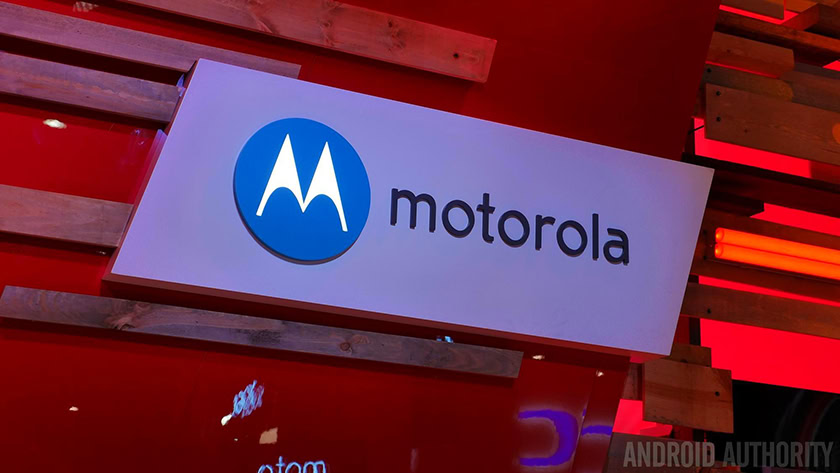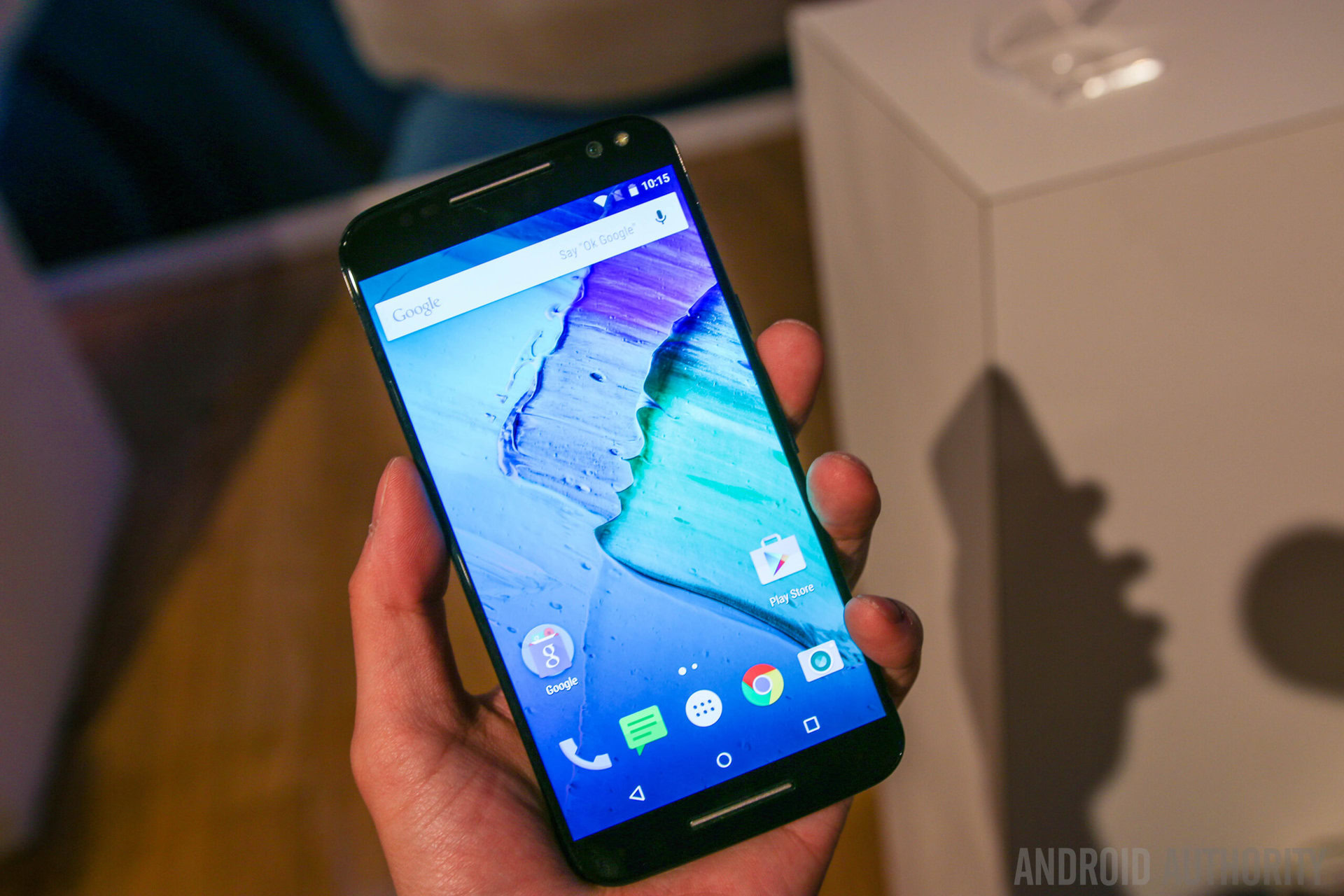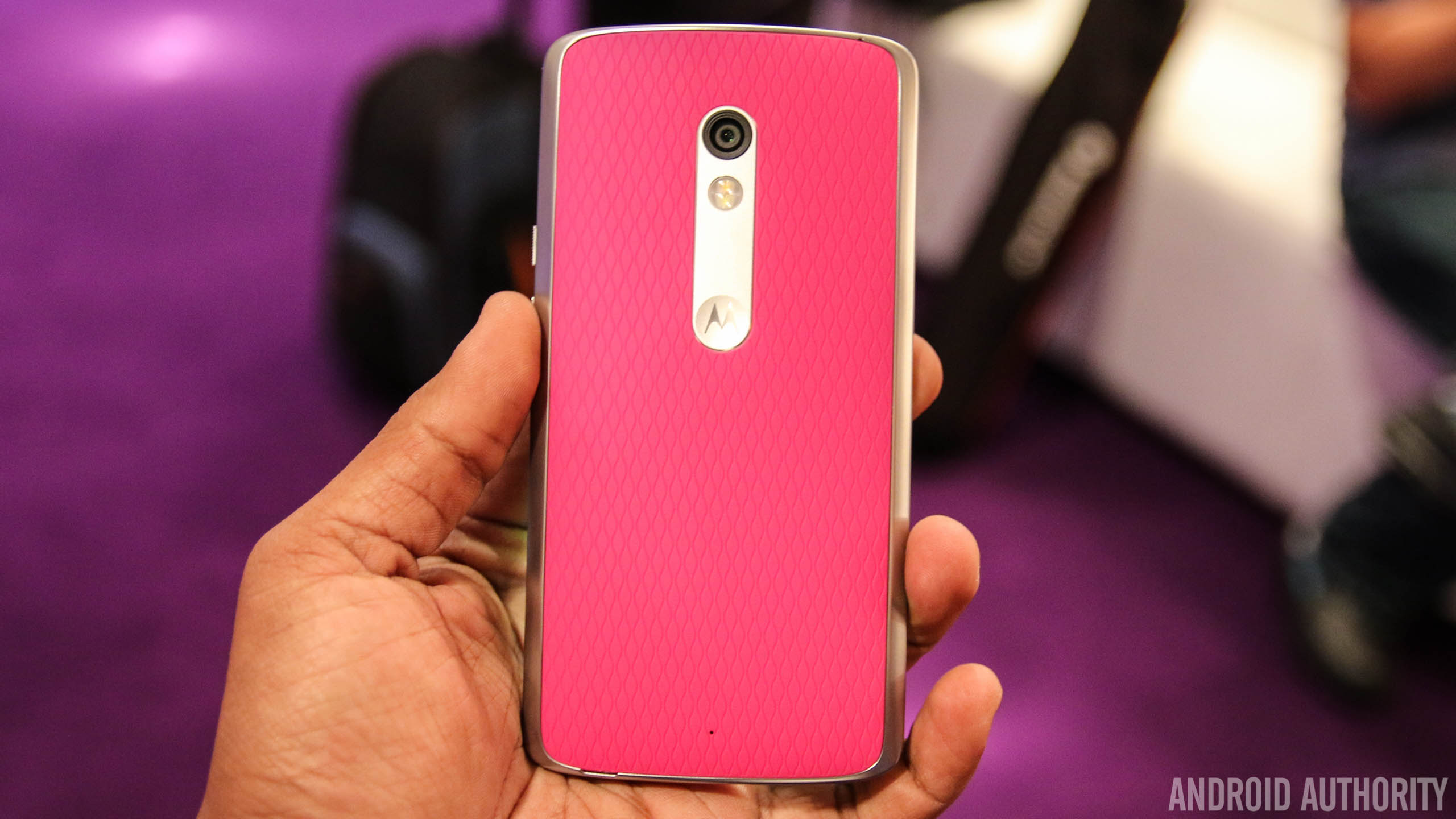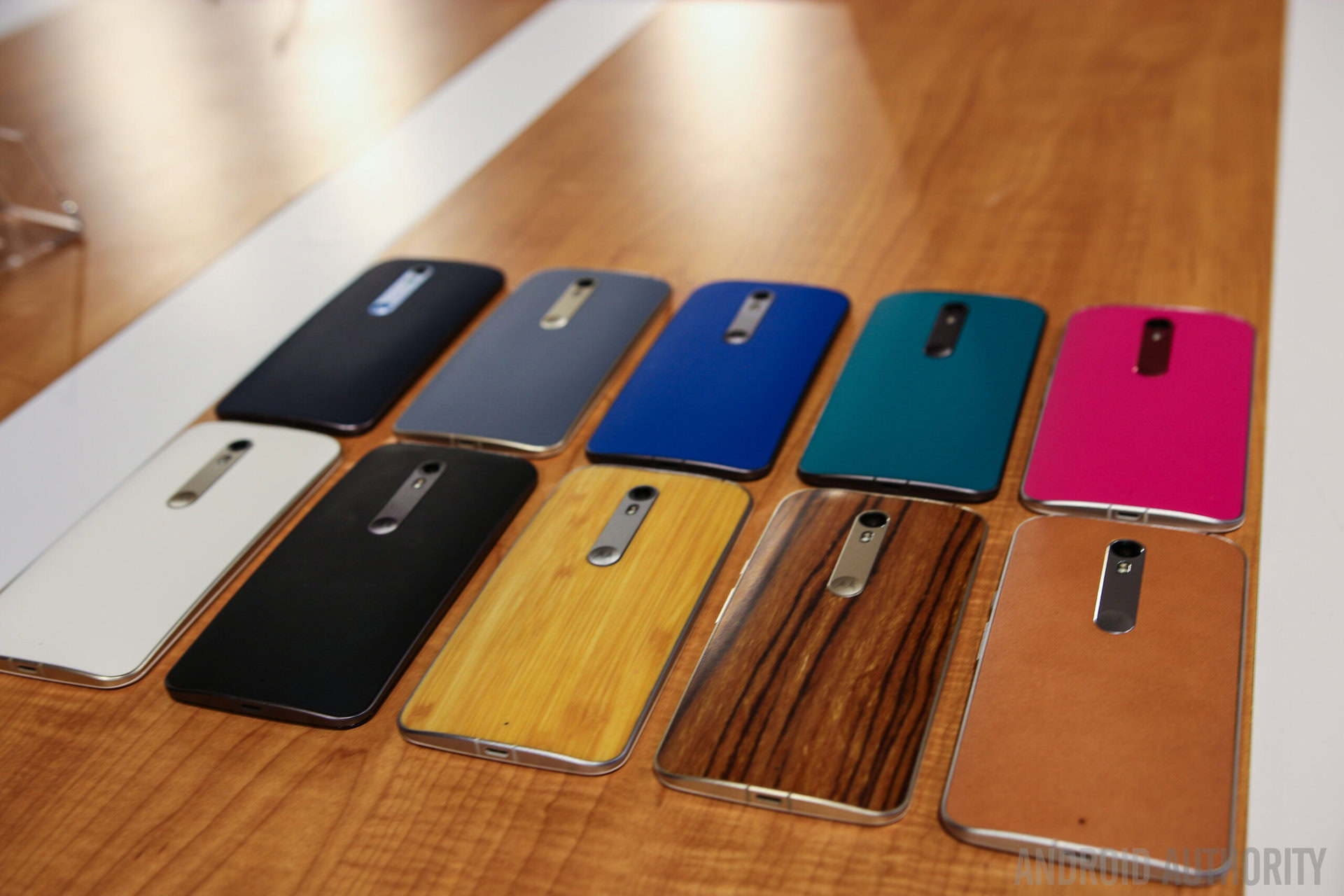Affiliate links on Android Authority may earn us a commission. Learn more.
Motorola's magical mix: stock Android + custom enhancements + Moto Maker

Last week Motorola unveiled the Moto X Style and Moto X Play, as well as the Moto G (2015). These new offerings look to continue the excellent line of products that the now-Lenovo owned company has on offer. Products that, with the Moto X series in particular, offer far more than Google has ever managed to, despite both the Moto series and Nexus series having relatively few software differences.
By using almost-stock Android and enhancing it with select functionality and features, Motorola has – in some ways – created a build of Android that is almost superior to the standard affair Google itself produces. The creation of Moto Maker, a user-customized variant of the product, allows for an unprecedented degree of personalization that rivals to this day fail to match.
Motorola has, in a sense, managed to produce something that transcends all other mobile OS platforms on the market today. Let’s take a closer look.
The Moto X and its features
Taking a brief step back in time, the early days of Android saw the existence of OEM skins the likes of which consumers today might be startled by. Samsung had its TouchWiz, LG the Optimus UI, HTCits Sense, and Motorola had the highly criticized MotoBlur. Of the four companies, three are still using more refined builds of the days long past, yet Motorola has crafted something new.
The release of 2013’s Moto X saw the birth of a brand new Motorola. A Google-owned Motorola. Indeed, rumors leading up to the launch hinted of a superphone that would render the Nexus series irrelevant.

The Moto X was ultimately not a superphone, but it did introduce many highly intuitive features that Google should arguably try to incorporate into AOSP.
These included everything from a new type of notification alert to always listening voice-activated functionality, to the ability to have the device understand contextual situations and even read out messages when applicable.
Let’s briefly go over each:
Moto Display: By utilizing various sensors on the front of the phone, select areas of the screen will activate to display notifications when you approach the phone. This is quite battery-friendly given how the AMOLED technology used means only the active pixels are being powered. Unfortunately the newly announced Moto X Style and Moto X Play have opted for standard LCD panels which may ultimately affect the battery life given that said technology requires the entire display to be “on” or “off” at an given time.
Moto Actions: Essentially gesture-based commands, you can wave your hand to silence calls and snooze alarms, twist your wrist twice in rapid succession to activate the camera, or activate/disable the “reach” motion that activates Moto Display.
Moto Assist: Contextual awareness. The phone can be set to automatically change its behavior for designated “sleep” times, driving, arriving home, and in meetings. While many of these features have now been employed by various competitors, Motorola still has some unique aspects such as Meeting based Auto Reply which automatically sends a message to anyone who contacts you during designated meeting times (synchronized with your calendar app and appointment book).

Moto Voice: Before Cortana or Google Now was always listening, there was Moto Voice. This feature allows you to, at any time, speak a phrase, and then ask the phone a question or to do a task. With the original Moto X (2013) it had to be “OK Google” but with the Moto X (2014) it could be altered to whatever you wanted.
Honorable Mention – Droid Zap: While technically not a core feature of the Moto product line, Verizon’s Droid Zap featured on the Droid Turbo offered an interesting take on file sharing. While not very different from long-standing core features like Android Beam, the ability to use Wi-Fi to transfer files as opposed to NFC coupled with the simple fact that users can readily see Zap thanks to a specific app (as opposed to digging through the Settings listing as with Beam) means it is of greater practical use.
Why Moto is different
Companies like Samsung, LG, HUAWEI, Xiaomi and countless others all have skinned Android to offer theoretical added value. By-and-large however, these skins are met with continued complaints, even in the case of less invasive variants like those seen on HTCor Sony devices. Some people just want pure Android.
This is why the Moto X is so brilliant: it is basically unadulterated Android, but with some intuitive additions thrown in.

Motorola also managed to outshine custom ROMs and forks based on AOSP.
Android Open Source Project is a curious beast. It’s completely free and devoid of any and all of Google’s financial pipelines (i.e. metadata and advertising revenue) and it has been altered to create splinter OS variants like Amazon’s FireOS or CyanogenMod. The latter in particular, while requiring root access to the device, is adored by many tech enthusiasts for endowing additional functionality and customization to Android, all of it of the user’s choosing.
Still, not everyone wants to – or knows how to – root their device. Many more don’t even know about the very concept of rooting. Yet, even if one were to compile all the benefits of CyanogenMod, or Paranoid Android, or any number of the other splinter factions, arguably none of them would be able to go head-to-head with Motorola.
Motorola has created what just might be the ultimate build of Android, at least as far as top tier products go: form and functionality while still staying true to the root cause. In doing so, Motorola has therefore created a product that actually transcends the very core on which it is based.
More than just software: Moto Maker

Without a doubt, the compliment to the UI enhancements seen in Motorola products is the existence of Moto Maker. This online customization system allows users to design the product to their liking: everything from the front bezel color to the rear battery cover material to various accents on the product to the startup screen and storage capacity. There are hundreds of possible combinations, and starting with the just-announced Moto G (2015), it’s now available for mid-priced models as well.

Moto Maker is an unmatched service that truly allows one to make and design a product that fits their image. Even Google’s own Nexus 6 could have benefited from Moto Maker custom-built crafting; a squandered opportunity indeed given who made the product.
Wrap Up
Motorola has truly managed to turn around its product lines since the early days of Android. In one sense, it offers a series of phones that are cheaper than many big rivals. This itself is good. But whereas some OEMs would then start to skin the system in order to provide over-the-top visually differentiated content, Motorola basically turned a blind eye to such an idea. Instead, it opted to make clear-cutting, non-invasive alterations to the core AOSP that arguably provide more intuitive functionality than many rivals who include all but the proverbial kitchen sink.
As if this wasn’t enough, the Moto Maker program allows those in key markets to basically design their phone themselves. Whereas some competitors had offered such services as laser engraving for a message in the past, that is but one of the options Motorola allows for. The ability to color coordinate (or not for that matter) means that the customer is king. It means you decide what you want, you decide what you will buy, and you decide how others will perceive your product.

In one sense, it’s surprising no one has yet copied Motorola’s interesting take on making mobiles; the prospect of a customized Galaxy S6 Edge, for example, would be a very nice idea. Still, due to Motorola’s smaller market share and sales, it can afford to offer a service like the Moto Maker given there is far less risk and overhead involved. The fact that a product like the Moto X can be produced so brilliantly despite the OEM’s changing ownership three times in the past few years is impressive in and of itself.
Whatever the case may be however, the end result is a product – and company – like no other.